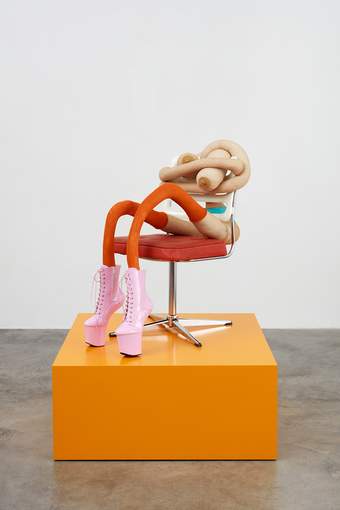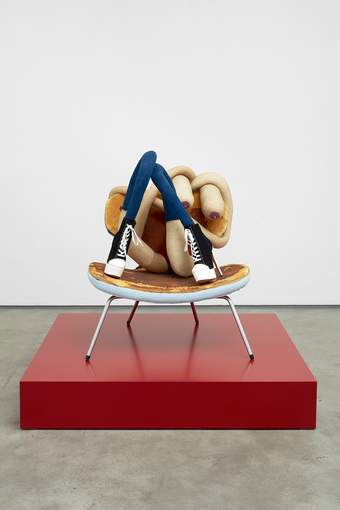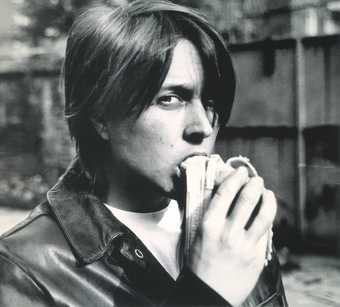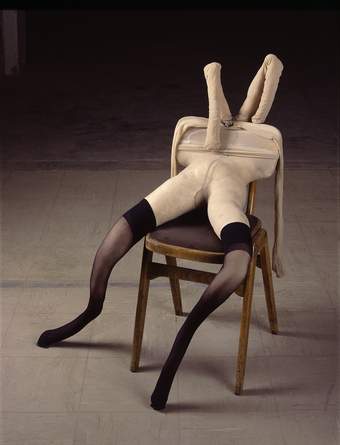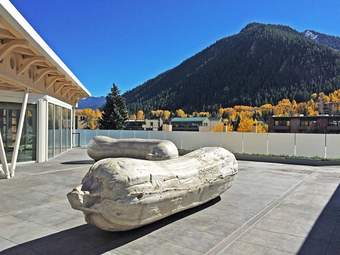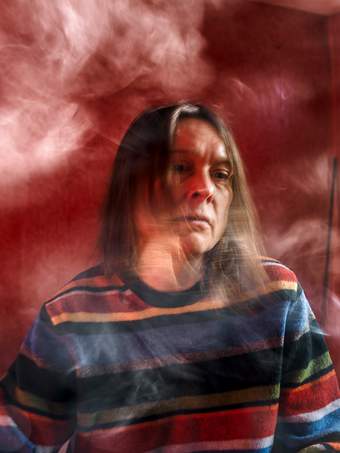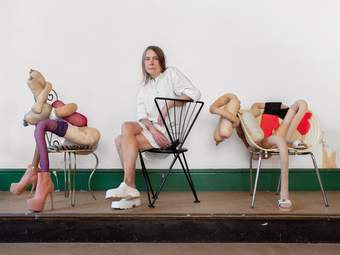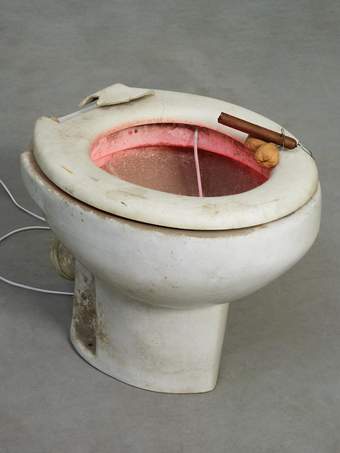Since 1990, Sarah Lucas has been making art that distorts everyday life. The expressiveness of ordinary things is coaxed out, or just noticed and pointed at. In this exhibition, a banana, lightbulbs, concrete, fish, a car, tights, chairs, tabloid newspapers and cigarettes are used to explore the human condition. Mischievously and honestly, Lucas asks universal questions about our origins, sex, class, happiness and mortality.
Lucas’s strange, familiar and funny forms are deeply personal. HAPPY GAS is also narrated entirely in her own voice. Yet the familiar themes and images in her work could be about any of us. The exhibition tells a fuller story than the 1990s Young British Art scene that Lucas is so often associated with. Through self-portraits, a young Lucas and the now 60-year-old artist look at each other’s work. We see reminiscence, social comment, family, childhood and collaborative friendship running through almost 35 years of making art.
Lucas has always challenged the conventions of photography, sculpture and collage through her choice of subjects and materials. What might appear rough or casual is in fact a careful manipulation of materials, words and her own image. In the exhibition, she creates a mood of grit, shock and play, regularly punctuated by the darkness and pleasure of sex, smoking and food. Lucas’s subversion of social realism points to what is both laughable and demeaning about class and gender stereotypes. Too many limbs, no heads, explicit metaphors and huge food give this realism a magical quality, creating a defiant, joyful and vital atmosphere.
